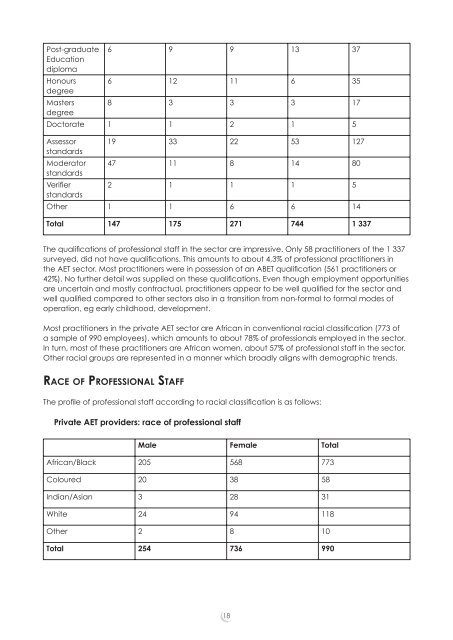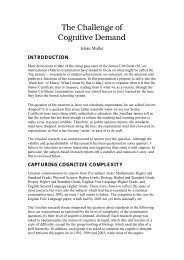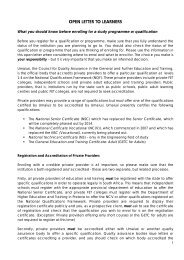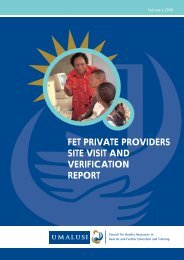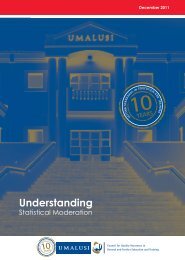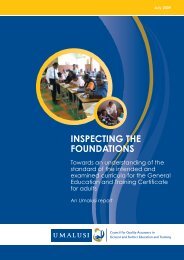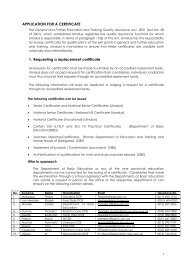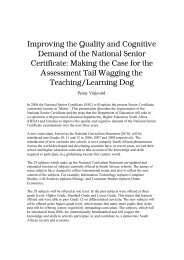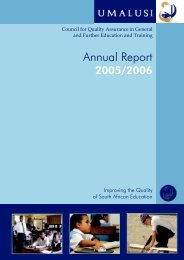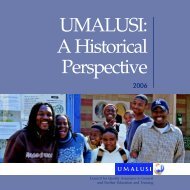Umalusi AET Report
Umalusi AET Report
Umalusi AET Report
- No tags were found...
Create successful ePaper yourself
Turn your PDF publications into a flip-book with our unique Google optimized e-Paper software.
Post-graduateEducationdiploma6 9 9 13 37Honours 6 12 11 6 35degreeMasters 8 3 3 3 17degreeDoctorate 1 1 2 1 5Assessor 19 33 22 53 127standardsModerator 47 11 8 14 80standardsVerifi er 2 1 1 1 5standardsOther 1 1 6 6 14Total 147 175 271 744 1 337The qualifi cations of professional staff in the sector are impressive. Only 58 practitioners of the 1 337surveyed, did not have qualifi cations. This amounts to about 4,3% of professional practitioners inthe <strong>AET</strong> sector. Most practitioners were in possession of an ABET qualifi cation (561 practitioners or42%). No further detail was supplied on these qualifi cations. Even though employment opportunitiesare uncertain and mostly contractual, practitioners appear to be well qualifi ed for the sector andwell qualifi ed compared to other sectors also in a transition from non-formal to formal modes ofoperation, eg early childhood, development.Most practitioners in the private <strong>AET</strong> sector are African in conventional racial classifi cation (773 ofa sample of 990 employees), which amounts to about 78% of professionals employed in the sector.In turn, most of these practitioners are African women, about 57% of professional staff in the sector.Other racial groups are represented in a manner which broadly aligns with demographic trends.RACE OF PROFESSIONAL STAFFThe profi le of professional staff according to racial classifi cation is as follows:Private <strong>AET</strong> providers: race of professional staffMale Female TotalAfrican/Black 205 568 773Coloured 20 38 58Indian/Asian 3 28 31White 24 94 118Other 2 8 10Total 254 736 99018


